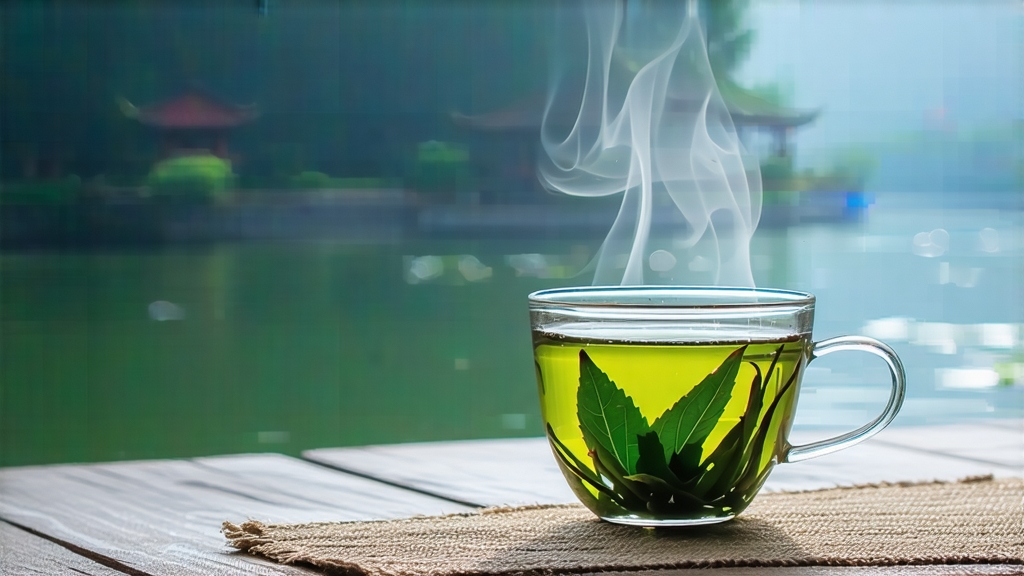
Longjing, literally “Dragon-Well,” is more than a tea; it is a liquid postcard from the hills that cradle Hangzhou’s West Lake, a sip that has greeted emperors, poets, and now, curious tea lovers on every continent. First recorded in the Tang dynasty (618-907) but catapulted to fame during the Qing when the Qianlong Emperor allegedly bestowed imperial status upon eighteen bushes still growing at Shífēng (Lion Peak), Longjing is the benchmark against which all Chinese green teas are measured. Its charm lies in a paradox: a flavor at once robust and delicate, nutty and floral, like roasted chestnuts caught in morning mist.
Terroir is everything. The protected core zone—Xī Hú, or West Lake—comprises four micro-villages: Shífēng, Méijiāwǔ, Wēngjiāshān, and Lóngjǐngcūn itself. Here, quartz-rich sandstone weathers into sandy loam that drains quickly yet holds just enough moisture. The lake acts as a thermal battery, moderating temperature so the buds can laze through cool nights and bask in gentle days. Frequent fog filters sunlight into soft, diffused rays, coaxing the leaves to stockpile amino acids—especially L-theanine—responsible for the tea’s famous “sweet broth” sensation. Move a few kilometers outward and the same cultivar tastes flatter, grassier; the dragon loses its whiskers.
Within the Longjing family, three cultivars dominate. The heirloom Qiángxiǎo (traditional small-leaf) yields the most complex cup but only in the first two spring weeks; its leaves are tiny, tippy, and stubbornly low-yield. Wùniánzǎo, a 1970s-bred early sprouter, extends the season by ten precious days and offers a brighter, more vegetal profile. Lóngjǐng 43, the scientific darling, balances yield and elegance, producing the iconic flat, jade-green spear that travel photographers adore. Each cultivar is pampered like bonsai: no chemical fertilizer within 30 days of plucking, no irrigation during harvest lest the roots dilute their own sap, and a ban on night-picking because dew-bloated cells bruise easily.
The hand that plucks is the first author of quality. Village girls still follow the “early, tender, clean” rule: one bud plus one unfolding leaf, no longer than 2.5 cm, harvested before Qingming festival (around April 5) when the leaf’s chlorophyll-to-polyphenol ratio is perfect. A skilled picker gathers just 500 grams of fresh leaf in a dawn shift; that will shrink to 100 grams after firing. The baskets are bamboo, never plastic, lined with gauze to prevent compression heating. Within four hours the leaves must reach the workshop, otherwise enzymatic gossip starts and the green soul oxidizes.
Pan-firing is where science flirts with ballet. Traditionally, a 64-centimeter cast-iron wok is seasoned with tea oil for decades; its surface becomes a non-stick patina. The firer—almost always a woman, because legend claims female palms read temperature better—heats the wok to 90 °C, then swirls in a handful of leaves. For ten minutes she presses, lifts, shakes, and strokes using only her bare fingers, feeling for the moment when moisture drops from 75 % to 30 %. The motion is called “grasping and shaking ten times,” a rhythm counted in silent mantras. When the leaf limpens like silk, she drops the temperature to 60 °C for the “final shaping” stage, coaxing each shoot into the flat, sword-like form that can stand upright in a glass of hot water. One mistake—five seconds too long—and the amino acids convert to bitter pyridines; the dragon becomes a toad.
Modern cooperatives have introduced electric tumblers calibrated to within 2 °C, yet the best lots still pass through human hands at the critical “return to fragrance” phase, where a second gentle reheating awakens chestnut aromatics. The tea is then cooled on rice-paper mats for six hours, allowing residual moisture to migrate outward, preventing that dreaded “green stomach” bite. Finally, a charcoal “gentle bake” at 50 °C for half an hour locks in stability; the leaves can now travel